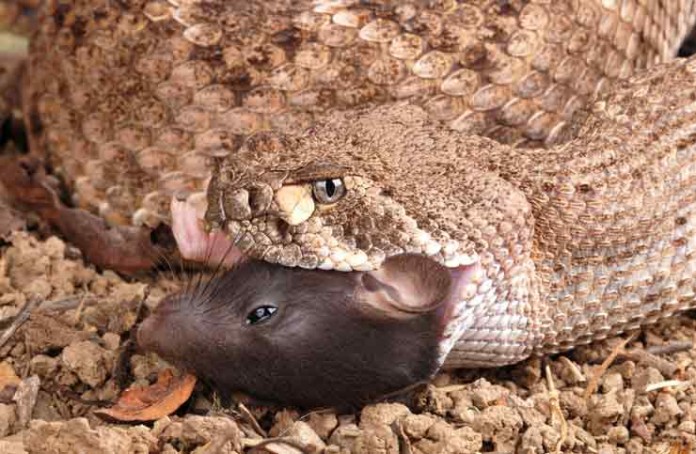The rattlesnake is one of the most commonly spotted crawlers in the Americas. North and South America are home to about 32 species of rattlesnakes. The number is that of the known species but there is little possibility of there being more species that are unfound.
Rattlesnakes are an amazing creature and some of them are endangered or close to extinction. The canebrake, timber rattler and the massasauga rattlesnakes are endangered species due to organized extermination and loss of their natural habitats. Almost all rattlesnake species prefer arid or semiarid regions but over the last many decades, they have found their ideal habitats in rural areas, forests and swamp lands. You are more likely to come across a rattlesnake than most other snakes.
Quick Rattlesnake Facts
Here are some enticing facts about this wonderful snake – that any enthusiast should be aware of.
- Rattlesnakes are quite amazing in regards to how they hunt. They have thermal receptors that can trace or sense the presence of their prey. Also, they can track the scent of their prey in the air. Besides, rattlesnakes can observe even the minutest vibration in the ground.
- A rattlesnake is typically three or four feet long but there are some larger ones that can be as long as eight feet.
- Rattlesnakes have the unusual quality of blending in with its surroundings. They can camouflage their presence since they do not have very colored bodies. Rattlesnakes are usually black or brown, grey or olive.
- The rattlesnake head is quite interesting. It is triangular in shape and it has vertical pupils.
- The rattlesnake is so named because of its tail which ends in a rattle.
- The rattlesnake sound is also quaint. It rattles and thus warns any predator to stay away from it. However, the rattlesnake sound is not produced when the snake is shocked. Take a look at this video about the rattlesnake’s sound:
- Rattlesnakes are usually venomous. They secrete hemotoxic venom. It has the ability to destroy blood vessels and cells. Deaths caused by rattlesnake venom are not common because antidotes are widely available. But if a person is not given the antidote in a timely manner, then possibilities of fatality are very high. However, a rattlesnake may not always release the poison when it bites a prey or a human. Such attacks are called dry bites. Like many snakes, rattlesnakes cannot secrete the venom quickly and thus successive bites will not have the venom once it is lost.
-
The foods on top of the dietary chart of rattlesnakes are small birds, rats and mice.



